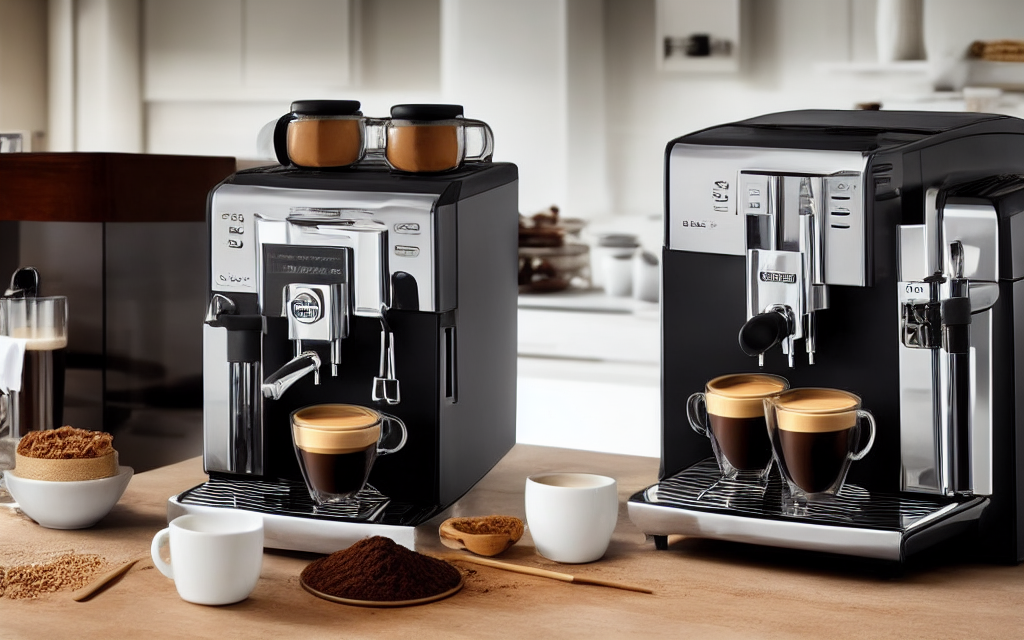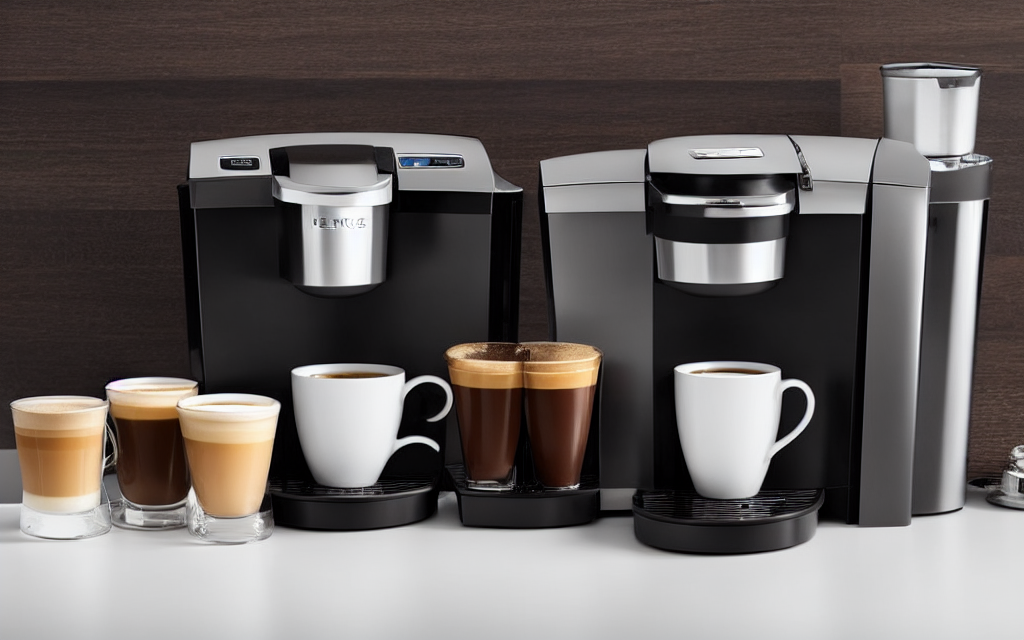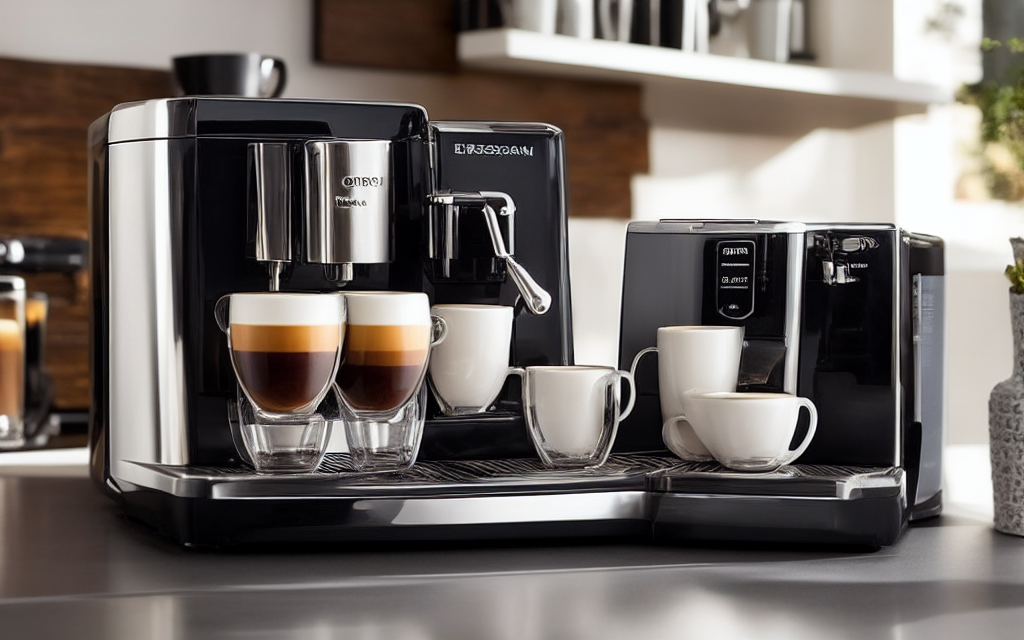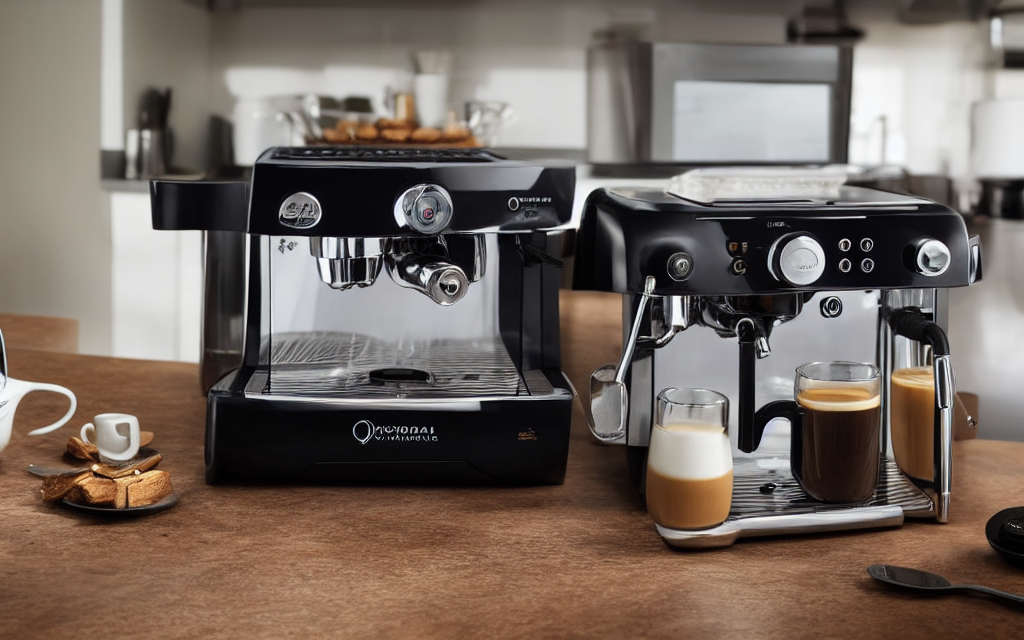What is the best espresso machine for a beginner?
Starting your journey into the world of home espresso might seem intimidating, but finding the best espresso machine for a beginner doesn't have to be overwhelming. With so many options available, it's easy to feel lost, unsure about which machine will give you that perfect, café-style espresso without breaking the bank or creating a tiny kitchen appliance explosion. But fear not! This guide is designed to help you navigate the options, understand key features, and find the ideal machine to start your barista dreams without the stress. We'll break down the different types of espresso machines, highlight crucial features for beginners, and recommend specific models that have proven to be excellent starting points.
Sponsored placement reserved
Configure project monetization rules or AdSense slot IDs to activate this position automatically.
Affiliate Disclosure: This article contains affiliate links. We may earn a small commission at no extra cost to you if you click through and make a purchase, which helps us continue providing valuable content.
Espresso Machines 101: Understanding the Basics
Before diving into specific recommendations, it's essential to grasp the fundamental differences between espresso machine types. This knowledge will help you make an informed decision based on your budget, space, and desired level of complexity. The main categories you'll encounter are Moka pots, Drip coffee machines with espresso options, Single-Serve machines (like Keurigs), and Dedicated Espresso Machines (Semi-Automatic, Super Automatic, and Manual).
Level Up Your Know-How
Get actionable frameworks, checklists, and templates delivered every Monday to keep your skills sharp.
We respect privacy. Unsubscribe anytime.

Espresso Machines 101: Understanding the Basics
Moka Pot: The Simple Italian Staple
Often considered the quintessential Italian espresso, the Moka pot (or Bollitore) is more than just a coffee maker; it's a cultural icon. Think of it as a stovetop pressure cooker for coffee. Here's what you need to know:
- How it Works: You place ground coffee in a filter basket at the bottom, fill the lower chamber with water, screw on the top lid with a filter fitted, and heat it on your stovetop. As the water boils, pressure builds, forcing hot water through the coffee grounds to create a robust, espresso-style coffee (often called caffè moka).
- Pros:
- Incredibly Simple: No buttons, no plumbing, just heat it up and pour. Ideal for absolute beginners or those who want minimal fuss.
- Inexpensive: Moka pots are generally very affordable (often under $50).
- Portable: Many are small enough for travel.
- Takes up minimal counter space.
- Cons:
- Not True Espresso: While strong, it's more of a concentrated coffee. It doesn't pull milk steaming pressure, so no lattes or cappuccinos.
- Requires Stovetop: You need access to a working stovetop.
- Less Control: The brewing temperature and pressure are largely dependent on the stovetop heat, leading to more variability.
- Messy: Requires measuring coffee and water manually.
- Best For: Those on a tight budget, beginners who just want a strong cup of coffee without complexity, or those interested in caffè moka.
Drip Coffee Machines with Espresso Options
These machines are common household appliances, but some models offer espresso functionality. Be aware of the different types within this category.
- Drip-Through Portafilter (e.g., Cuisinart DGB-3000): These machines have a built-in portafilter directly under the water reservoir. Hot water from the machine drips through ground coffee in the portafilter, creating a weaker, less authentic espresso. It's the most basic and cheapest way to get some espresso-like coffee from a drip machine.
- Pros: Uses standard drip coffee filters, relatively simple operation.
- Cons: Produces very weak and watery espresso compared to dedicated machines. Lacks pressure agitation, resulting in poor extraction.
- Dual Boiler/Dual Path (e.g., many Hamilton Beach, Mr. Coffee models): These machines have two separate brewing paths. One brews coffee via the standard drip mechanism, and the other uses a boiler to heat water under pressure, similar to a semi-automatic machine, pulling actual espresso shots directly into a portafilter.
- Pros: Offers a more authentic espresso experience alongside regular drip coffee. More control than simple drip-through models.
- Cons: Often compromises on the quality of the espresso compared to dedicated machines. Can be noisier. May use more coffee grounds than necessary for a proper espresso shot.
- Pros (General): Familiar interface, often easy to use, produces familiar coffee (drip).
- Cons (General): Not a substitute for a dedicated espresso machine. The "espresso" function is often an afterthought. Quality can vary significantly.
Single-Serve Machines (e.g., Keurig)
While not primarily designed for traditional espresso, some single-serve machines can brew a strong, dark roast coffee that resembles espresso in strength and color, albeit without the pressure. Look for models that allow you to choose a very dark roast setting.

Single-Serve Machines (e.g., Keurig)
- Pros: Extremely fast and convenient. Consistent coffee brewing if you use genuine K-cups pods. Takes up minimal counter space.
- Cons: Severely compromises the espresso experience. You get hot water pushing coffee grounds, not pressurized steam extracting flavors like a real espresso. Often requires specialized pods, which can be costly long-term. No milk steaming capability.
- Best For: Those who prioritize convenience and speed over authentic espresso quality. Not recommended if you seek a true espresso experience.
Dedicated Espresso Machines: The Heart of the Matter
This is where the real magic happens for authentic espresso. These machines are purpose-built to brew espresso and often include milk steaming capabilities for lattes and cappuccinos. They are divided into three main sub-types, each with its own advantages and disadvantages for beginners.
Semi-Automatic Espresso Machines (SAEs): These are the workhorses of home espresso. They brew espresso by forcing hot, pressurized water through tamped coffee grounds, but they do not automatically froth the milk. You control the water flow (by holding the lever) and the milk steaming (using a separate steam wand).
- Pros:
- Authentic Espresso: Produces the real deal.
- Great Learning Tool: Forces you to learn crucial skills like tamping, dosing, and pressure profiling.
- Relatively Affordable: Offer more control and quality for a lower price point than super automatics (often $300-$800).
- Compact: Often smaller than super automatics.
- Cons:
- Requires Manual Effort: You must learn to operate the steam wand for steaming milk effectively and safely. This involves practice.
- Requires More Parts: You need an espresso machine, a grinder, and sometimes a thermosiphon boiler heater (for machines without a built-in grinder portafilter).
- Requires More Cleaning: More parts mean more cleaning routines.
- Best For: Beginners serious about learning the craft of espresso and latte art, those with limited budgets, those with smaller kitchens, and those willing to put in the time to master manual controls.
- Pros:
Super Automatic Espresso Machines (SAEs): These machines automate almost everything. They grind beans on board (if you have bean bags or pods), tamps the grounds, brews the espresso, steams the milk automatically, and sometimes even cleans the machine.
- Pros:
- Ultimate Convenience: Minimal effort required. Just add beans/pods and press a button.
- Consistency: Excellent milk texturing and consistent shot extraction.
- Less Mess: Fewer parts to clean.
- Cons:
- Expensive: Significantly more costly than semi-automatics (often $1000-$3000+).
- Less Hands-On Learning: You learn less about the espresso-making process itself (e.g., tamping).
- Larger Footprint: Tend to be bulkier and take up more counter space.
- Potentially Lower Quality: Can sometimes compromise on shot quality or milk texture due to less user control or complex internal mechanisms.
- Best For: Beginners seeking maximum convenience, those who don't mind paying a premium, and those with ample counter space.
- Pros:
Manual Espresso Machines (or Lever Machines): These are the purist option. They rely on a manual lever that you pump down, which builds pressure to brew the espresso. They are often highly regarded for producing exceptional coffee but are also the most complex and expensive.
- Pros:
- Masterpiece Potential: Offer unparalleled control and the potential for exceptional coffee quality with practice.
- Builds Incredible Skill: Teaches you everything there is to know about espresso brewing.
- Unique Experience: The process is an art form.
- Cons:
- Very Expensive: Often cost several thousand dollars.
- Requires Significant Effort & Learning: Extremely steep learning curve. Mastering the lever requires practice and understanding of pressure and timing.
- Requires Grinder: You absolutely need a separate, high-quality grinder.
- Requires Consistency: Everything depends on user input.
- Best For: Advanced beginners or enthusiasts willing to invest heavily and commit to extensive learning. Not ideal for absolute novices seeking simplicity.
- Pros:
Key Features to Look For (Especially as a Beginner)
When choosing your first dedicated espresso machine (semi-auto or super auto), focus on these features to ensure a good starting point:
- Pressure: Look for machines that boast at least 9 bars of pressure. This is the standard benchmark for authentic espresso extraction. Consistency in pressure is key.
- Temperature Control: A good machine should maintain a stable brewing temperature (typically between 195-205°F or 90-96°C). Some machines have built-in thermistats or PID controllers for better temperature stability, which is crucial for consistent shots. However, simpler machines without this can still work if you preheat your cups and have a thermometer.
- Brew Group Quality: Look for machines with a good quality brew group (portafilter and boiler). Stainless steel boilers (especially thermosiphon) are preferred over aluminum for better heat retention and consistency. Check reviews regarding any issues with group head temperature stability or "flash boils."
- Steam Wand: Ensure the steam wand is powerful enough and designed for easy steaming. Look for features like a swivel steam wand or a dedicated steam wand lock nut for easier access and safety. A good machine should allow you to texture milk effectively (steamed and textured to velvety smoothness) without taking an excessive amount of time or energy.
- Build Quality & Durability: A well-built machine will last longer. Look for solid construction, quality materials (stainless steel), and good customer reviews regarding reliability.
- User Reviews: Absolutely essential! Read reviews from other users, especially beginners. Pay attention to comments about ease of use, reliability, common issues (like leaking, inconsistent pressure), and customer service. Look for machines with a good track record.
Top Recommendations for the Best Espresso Machine for Beginners
Sponsored placement reserved
Configure project monetization rules or AdSense slot IDs to activate this position automatically.
Based on popularity, user reviews, and value for money, here are some top contenders for the best espresso machine for a beginner:

Top Recommendations for the Best Espresso Machine for Beginners
Cuisinart DGB-3000 BrewMaster:
- Category: Dual Boiler/Dual Path
- Why it's Good for Beginners: It's a popular choice for beginners due to its dual functionality (drip and espresso), relatively affordable price point, ease of use, and decent espresso quality for its price. It brews authentic espresso shots directly into a reusable filter (requires ground coffee), and it has a separate steam wand for milk texturing. It strikes a good balance between features and cost.
- Considerations: The espresso function is still a basic dual-path brew, so it won't be as good as a dedicated semi-automatic, but it's a solid starting point. Milk steaming might require some practice.
De'Longhi Dedica (or similar models like Dedica Plus, Style X, B6002XS, EC685):
- Category: Semi-Automatic (often called Super Auto due to its ease of use, but technically SAE)
- Why it's Good for Beginners: De'Longhi is a well-known brand with a reputation for reliable, user-friendly machines. Models like the Dedica offer a great balance of features (pressure, temperature, steam power) for the price. They are often praised for producing good espresso shots and decent milk texture once you learn to use the steam wand. They are widely available and have a large community of users for troubleshooting.
- Considerations: Prices can vary significantly depending on the specific Dedica model (basic vs. Plus). Ensure you're getting a model with at least 15 BAR pressure if possible. The steam wand operation might need some getting used to.
Breville BES870XL Oracle Plus (or BES860XL):
- Category: Semi-Automatic (often called Super Auto due to its robust features, but technically SAE)
- Why it's Good for Beginners: Breville machines are known for their excellent build quality, reliability, and user-friendly design. The Oracle Plus is a popular model offering robust performance (15 BAR pressure, good temperature control via a dial), powerful steam, and a durable construction. It includes a built-in grinder, which simplifies the process further (though you still need to learn manual controls). It's slightly more expensive than the Cuisinart but offers arguably better performance and more features.
- Considerations: Higher price point than the Cuisinart. Requires learning manual controls (lever). Includes a grinder, so you need to factor in grinder costs and maintenance.
Melitta E61 Evo (or similar E61-based machines from La Marzocco, Slayer, etc.):
- Category: Semi-Automatic (High-End, often called Super Auto, but technically SAE with high quality)
- Why it's Good for Beginners: While technically a semi-automatic, the E61 brew group is legendary for its stability, heat retention, and pressure delivery. Machines based on the E61 platform (often called Super Automatic because they automate the bean grinding part) offer top-tier performance at a lower price point than a pure manual lever machine. They provide excellent shot consistency and milk texturing potential, making them great machines for beginners who want high performance but still benefit from the semi-automatic format.
- Considerations: Still requires learning manual controls (lever) and using a separate grinder (unless it's a machine that grinds beans on board, which is less common for E61 chassis). Price point is higher than dedicated SAEs.
Finding Your Perfect Match
Choosing the best espresso machine for a beginner boils down to balancing your budget, your commitment to learning, the space available in your kitchen, and your desired level of convenience versus involvement. Here's a quick guide to help you decide:
- Serious Beginner / Coffee Enthusiast: If you're genuinely interested in learning the art of espresso and latte art, and have a reasonable budget ($300-$800), a Semi-Automatic Machine (SAE) like the De'Longhi Dedica series or Breville BES870XL is often the best long-term investment. It forces you to learn crucial skills and gives you more control over the final product.
- Convenience Focused / Limited Budget: If you prioritize ease of use, don't want to spend a lot of time learning manual skills, or have a tight budget ($200-$500), the Cuisinart DGB-3000 is a great dual-function option, or consider a more affordable Semi-Automatic like the De'Longhi Dedica if your budget allows a bit more.
- Maximum Convenience / Higher Budget: If convenience is paramount and you have the budget ($1000-$3000+), a Super Automatic Machine (often based on SAE platforms like the E61) can provide a fantastic, hassle-free experience. Remember that the Breville BES870XL (with grinder) and Melitta E61-based machines fall into this category despite being technically SAEs due to their high quality and features.
- On the Go / Simplest Start: If you want the absolute simplest introduction to espresso, stick with the Moka Pot for now, understanding its limitations. It's cheap, simple, and gets you familiar with the concept of concentrated coffee.
Essential Tips for Your First Machine
Regardless of which machine you choose, here are some tips to ensure success as a beginner:
- Get a Quality Grinder: Espresso requires freshly ground beans. A basic manual burr grinder or even a good electric blade grinder (while not ideal, can work for beginners on a budget) is essential
Sponsored placement reserved
Configure project monetization rules or AdSense slot IDs to activate this position automatically.
